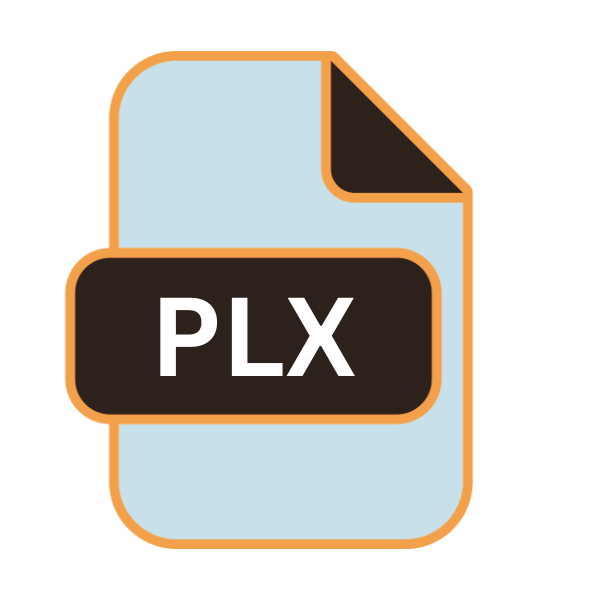.PLX File Extension

Perl Executable File
| Developer | N/A |
| Popularity | |
| Category | Executable Files |
| Format | .PLX |
| Cross Platform | Update Soon |
What is an PLX file?
The .PLX file extension is primarily associated with Perl, a high-level, interpreted programming language known for its versatility and powerful text manipulation capabilities.
In Perl, these files serve as executable scripts containing Perl code, capable of performing a wide range of tasks, from simple file operations to complex system administration tasks.
More Information.
The .PLX file extension’s history is intertwined with Perl’s evolution. Initially, Perl scripts were distributed in plain text files with a .pl extension. To enhance distribution and execution efficiency, Perl developers introduced the .PLX extension.
These files combined the convenience of a single executable file with the flexibility and power of Perl scripting, streamlining the deployment process for Perl-based applications.
Origin Of This File.
Perl, created by Larry Wall in the late 1980s, was designed to be a practical language for both system administration tasks and text processing.
As Perl gained popularity, developers sought efficient ways to distribute and execute Perl scripts. This necessity led to the emergence of the .PLX file extension as a means to package Perl scripts for execution.
File Structure Technical Specification.
.PLX files share similarities with standard Perl scripts (.pl files) in terms of syntax and structure. They consist of Perl code written in plain text, adhering to Perl’s syntax rules and conventions.
.PLX files undergo an additional compilation step, where Perl code is converted into bytecode or machine-readable format, enhancing execution speed and security.
How to Convert the File?
Converting .PLX files to other formats or vice versa is not a standard practice due to the nature of Perl’s compilation mechanism.
It’s possible to achieve similar functionality by converting between Perl scripts (.PL) and Perl executables (.PLX). Here’s how you can perform these conversions:
1. Converting .PLX to .PL (Perl Script):
- Open the .PLX file: Use a text editor or an integrated development environment (IDE) to open the .PLX file containing the Perl code.
- Copy the Perl Code: Select all the Perl code within the .PLX file and copy it to the clipboard.
- Create a New .PL File: Open your text editor or IDE and create a new file. Save this file with a .pl extension, indicating that it is a Perl script.
- Paste the Copied Code: Paste the copied Perl code into the newly created .pl file.
- Save the File: Save the .pl file containing the Perl code. You now have a Perl script (.pl) equivalent to the original .PLX file.
2. Converting .PL to .PLX (Perl Executable):
- Compile the Perl Script: Use a Perl compiler or bundling tool to compile the Perl script (.pl) into a Perl executable (.PLX). Popular tools for this purpose include
pp(PAR Packager) andperl2exe. - Execute the Compiler Command: Run the compiler command in your terminal or command prompt, specifying the input Perl script (.pl) and the desired output Perl executable (.PLX). The exact command syntax may vary depending on the compiler tool you’re using.
- Verify the Generated .PLX File: After compilation, verify the generated .PLX file for any errors or warnings. Ensure that the conversion process was successful and that the resulting .PLX file functions as intended.
- Distribute or Execute the .PLX File: Once verified, you can distribute the .PLX file or execute it as needed. The .PLX file contains the compiled Perl code and can be executed on systems with Perl interpreters installed.
Advantages And Disadvantages.
Advantage:
- Efficient Distribution: .PLX files provide a compact and portable means of distributing Perl applications, encapsulating all necessary code and resources within a single executable file.
- Improved Performance: By pre-compiling Perl code into bytecode, .PLX files offer enhanced execution speed compared to traditional Perl scripts, making them ideal for performance-critical applications.
- Enhanced Security: The compilation process adds a layer of obfuscation to the Perl code, making it more difficult for unauthorized users to view or modify the script’s logic, thereby improving security.
Disadvantage:
- Limited Portability: While .PLX files offer convenience for Perl-based applications, they may encounter compatibility issues when transferred between different Perl versions or platforms, potentially leading to runtime errors.
- Debugging Complexity: The pre-compilation process may complicate the debugging process, as developers cannot directly inspect the compiled bytecode. This can hinder troubleshooting efforts, especially in complex applications.
- Dependency Management: .PLX files may rely on external Perl modules or libraries, necessitating careful management of dependencies to ensure compatibility and functionality across different environments.
How to Open PLX?
Open In Windows
Simply double-click .PLX files in Windows, provided a Perl interpreter like ActivePerl or Strawberry Perl is installed. The interpreter will automatically execute the .PLX file, enabling seamless Perl script functionality.
Open In Linux
Execute .PLX files in Linux through the terminal. Navigate to the file’s directory and run it using the installed Perl interpreter, allowing Perl scripts to execute smoothly.
Open In MAC
On macOS, launch the .PLX file, and the system’s Perl interpreter will execute it directly, enabling Perl script execution without additional commands.
Open In Android
Install a Perl interpreter app from the Play Store on Android devices. Then, open the .PLX file within the app to execute Perl scripts seamlessly on Android.
Open In IOS
Use dedicated Perl interpreter apps from the App Store on iOS devices. Simply open the .PLX file within the app to execute Perl scripts effortlessly on iOS.
Open in Others
Explore cross-platform Perl interpreters or alternative solutions for platforms lacking native Perl support. Investigate community-supported ports or containerization techniques to execute .PLX files in non-standard environments.













